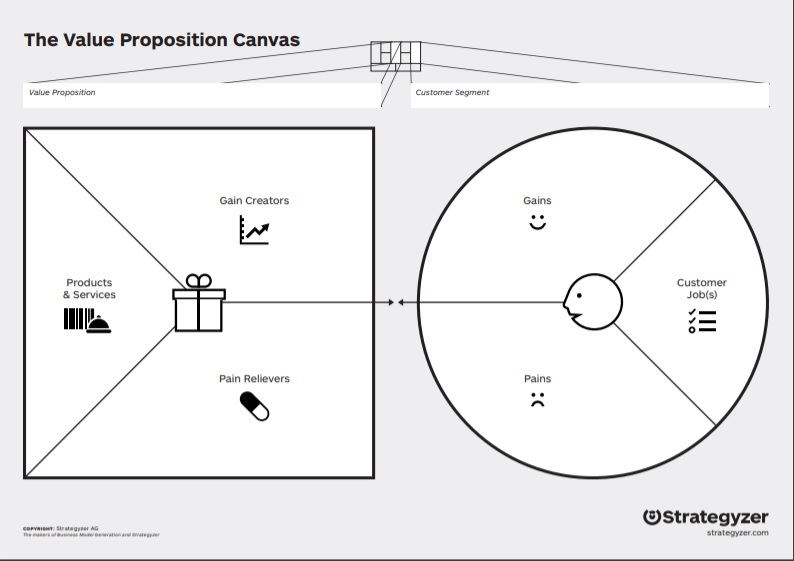Can we apply the same methods and principles used in business to help schools and universities to achieve more?
Opinno was challenged by a business school in Madrid to create a strategy that incorporates digital solutions and innovative teaching methods into the educational program. Our response was to develop a series of workshops based on the Value proposition canvas.
The Value Proposition Canvas is based on two elements of the Business model canvas, the customer segment who we intend to create value for and the value proposition which we believe attracts customers. The purpose of the Value Proposition Canvas is to establish a connection between what the product (business school) offers, and what the customers (students) want. In this case, we identified three types of “customers”: students, corporate clients, and public institutions.
The customer segment profile describes the customer characteristics in more detail: the jobs they are trying to get done, the negative aspects (the pains) of the jobs and the gains describing the benefits customers would like to have.

The jobs section of the canvas describes the jobs or tasks the students are trying to solve. Students want educational programmes that create opportunities for employment, international exchange programs, a fun and rewarding study environment. Corporate clients are seeking performing executive training that will create positive change in the organizations. Research and public institutions are interested in educational programs that educate citizens in certain disciplines.
The pains are what annoys customers: undesired costs, negative emotions, risks. In our case, the “pains” are the outdated teaching methods, bureaucratic application systems, difficulty in selecting courses, poor communication with staff. Other reasons why the school’s popularity has decreased could be the lack of international mobility and international exposure.
The gains are the benefits that customers require, expect or will be surprised by. Includes functional utility, benefits, and cost savings. In this section, students are expecting high-quality teaching, a digitized system that makes it easy to interact with staff, professors and colleagues. Easy access to learning material, guidance, and mentorship opportunities are also high on student’s priority list.

The Value proposition map is designed to address the customer’s jobs, pains, and gains.
In the “pain relievers” section, we came up with the following solutions: the implementation of digital systems that facilitate communication between applicants, students, and staff. The adoption of innovative teaching techniques like business games, real business case studies, the use of digital library and databases, simulations, 3D scanners and printers, drones, virtual reality, and other innovations will be integrated into the courses for students to experience the practical impact of these technologies on their future profession.
The expected positive outcomes of this transformation are an improved learning environment, better quality of education, methods for learning how to develop creativity; technologies and digital tools used for effectively conveying knowledge and skills useful to companies.
When the features of the value proposition map match the characteristics of the segment profile, we know we created a lucrative plan for our client.



